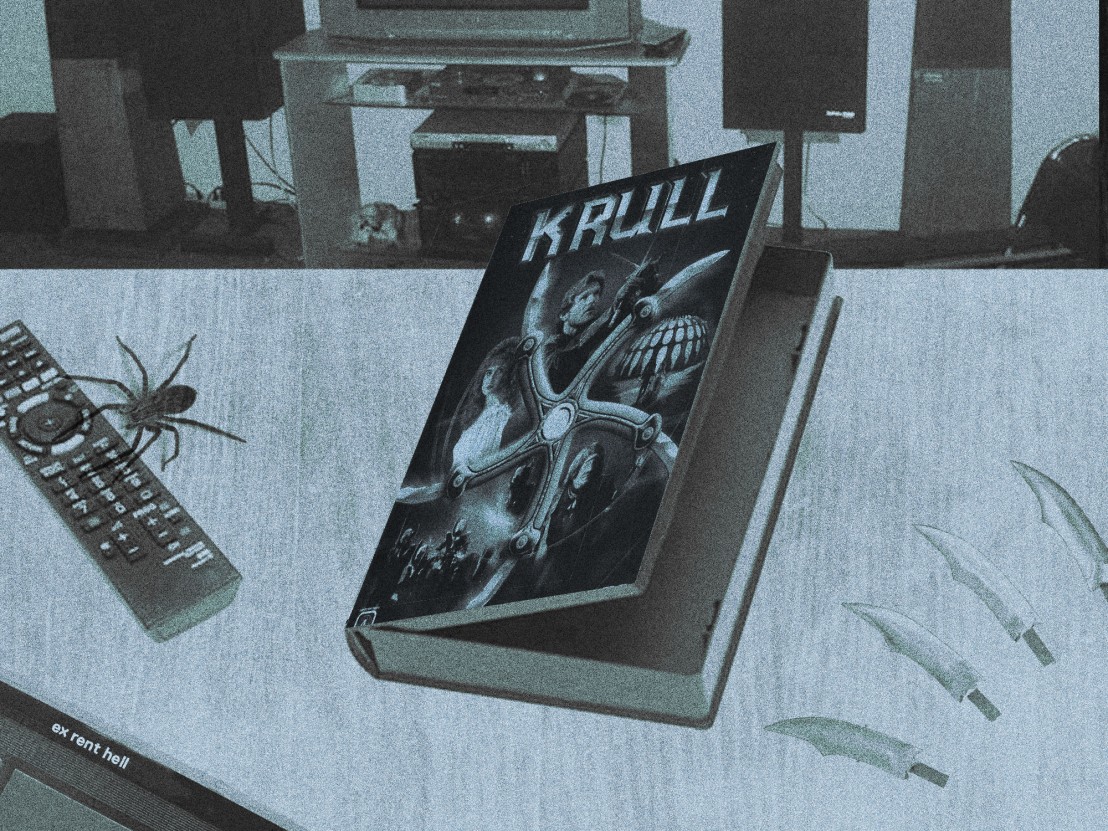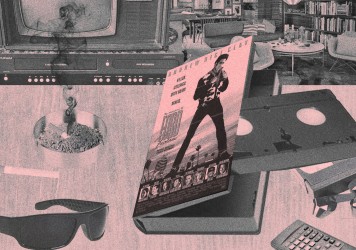
Ex-Rent Hell is a column dedicated to the seamier side of the 1980s VHS boom. Each week, ERH selects a film from this cursed era and asks one simple question: what went wrong?
In his book ‘The Hero with a Thousand Faces’, comparative fabulist Joseph Campbell attempted to divine the fundamental structure of the archetypal hero’s journey. He draws together various mythologies from around the world to create a monomyth, an all-encompassing ur-caper. Once straddled atop the uncontrollable stallion of adventure, Campbell says that our boy must travel a road of trials, achieve his goal and return to bestow his prize upon his fellow man. Toss in a few orcs, robots, princesses, the odd noble truth, some fiery foliage and three rusty nails and you have the narrative mould for everything from the awakening of the Buddha to the Return of the King. It is a storytelling template so ironclad that it could have been forged in the mines of Moria and, ropey production values aside (cf Moses), there is almost nothing one can do to make a dragon’s breakfast of it. All of which high-minded balloon juice brings us to Krull…
With the fanfare of James Horner’s furiously back-pedaling Star Trek theme still ringing in our ears, we are announced to the last minute wedding preparations taking place in Castle Forcedperspective upon the friscalating plains of the planet Krull. Here, Ken Marshall’s Prince Colwyn is to be hitched to dubbed mannequin Lysette Anthony’s equally unappealing Princess Lyssa. The ceremony oscillates between the type of high comedy and low camp that only declaiming, self-penned, cod Shakespearian wedding vows in second-hand fetish wear can ever hope to produce.
Luckily for all concerned, this rhapsodic mare’s nest is interrupted by a similarly dung-ho display of farty bombast surrounding the uninvited arrival of the mighty Berwhale the Avenger – a bipolar demigod who flies around the galaxy in a big stone head much like the one in softcore Sean Connery nappy riot Zardoz. The ghastly, nouveau riche offspring of the Rancor Monster and the Toxic Avenger, Berwhale smashes the place up, kidnaps the bride-to-be and imprisons her in the Vaseline-lensed brainwrong of Stevie Nicks’ dream archive until such time as she succumbs to his swampy charms.
After a failed attempt to cop off with the few bridesmaids still in one piece and the heartrending discovery that his deposit for the honeymoon suite is non-refundable, Colwyn glumly amasses a stock band of starving British character actors and sets out to rescue his immortal beloved. The (horny) hero has thus been called to adventure…
The film’s makers cannily identify the need for a weapon that is gimmicky enough to compete in the audiences minds with Beastmaster’s ferret army and Hawk the Slayer’s baddie-bewildering disco inferno soundtrack. And so Colwyn enters the dark, eerie, forbidden depths of The Pine Wood (read: a Pinewood Studios soundstage, after hours) to seeketh/steal the mythical ‘Glaive’ – a flying five pronged swastika made out of sharpened shoehorns that performs as Berwhale’s Kryptonite. Totally preposterous and seemingly designed with both eyes on a Commodore 64 spin-off game, the Glaive does however obviate the need for yet more bloody sword fighting and did, to be fair, go on to spawn that short lived weak sister of fantasy sub-genres – ‘Swastikas and Sorcery’ (RIP).
The rest of the film is about as enjoyable as a naked donkey ride to hell, in a sandpaper saddle. There’s some protracted, dialogue-free business with a giant crystal spider over which noise baron James Horner goes totally loco with a Theremin/jackhammer duel. We suffer the most insulting deus ex machina since the Theory of Evolution (a fleet of expedient, hitherto unmentioned flying Shire horses). And we witness the worst Glaive fight… well, ever. Otherwise it’s Star of the War Rings executed with every bit of the precision and delicacy you would imagine from the director of Mother, Jugs and Speed.
Produced by hallowed film titans Barclays Mercantile Industrial Finance, Krull (AKA Internal ComDev Equity B-M671/K) may be fondly remembered as one of the decade’s nobler failures, but is merely an example of an ERH living high on the tax-deductible hog. Whereas the previous year’s Tron was a brain-jacking acid-catapult into a viable futurama, and ’81’s Dragonslayer did exactly what it said on the box, the unique fantasy selling point of Krull is an incident free, 90-minute stroll from Point A (Castle Forcedperspective) to Point B (Berwhale Towers) in the company of an unutterably smug TV-movie actor in a blow-dried codpiece.
They throw a bit of folding money at it, sure, but the overriding feeling is that, like so many of it’s poorer cousins, Krull was on the video shelf purely because it existed, and owed its existence solely to the fact that those endless shelves were there.
This article was originally published in LWLies 12: The Tales from Earthsea issue
Published 28 Apr 2016

Remember when Hollywood tried to make Chesney Hawkes a bona fide movie star?

A previously lost film provides a fascinating insight into the actor’s unorthodox creative process.

Remember when Hollywood attempted to parlay the stage act of a blue comedian into a wannabe raunchy comedy?